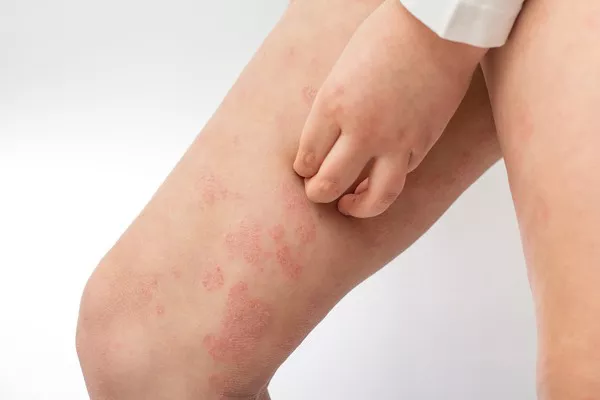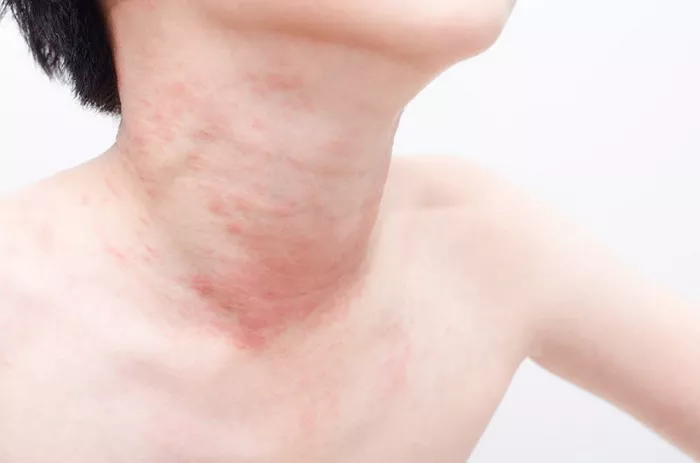Eczema, a chronic skin condition characterized by inflammation, itchiness, and redness, can be particularly bothersome when it affects the legs. Constant itching and discomfort can significantly impact one’s quality of life, making effective treatment essential. While eczema cannot be cured, managing its symptoms and preventing flare-ups is achievable through a combination of self-care measures and medical interventions. In this article, we’ll explore various strategies for treating eczema patches specifically on the legs.
Understanding Eczema on the Legs
Eczema on the legs, often referred to as “stasis dermatitis,” typically occurs in areas where skin is prone to dryness, friction, and rubbing. The lower legs are particularly vulnerable due to factors such as poor circulation, prolonged standing or sitting, and environmental irritants. This type of eczema presents as red, scaly patches that may ooze or crust over time. Itching is a common symptom, which, when scratched, can lead to further inflammation and potential infection.
1. Moisturize Regularly
One of the most fundamental aspects of managing eczema on the legs is maintaining proper skin hydration. Moisturizers help restore the skin’s natural barrier function, preventing moisture loss and reducing the risk of irritation. Opt for fragrance-free, hypoallergenic moisturizers that contain ingredients like ceramides, glycerin, and hyaluronic acid, which help lock in moisture and soothe inflamed skin. Apply moisturizer generously after bathing and throughout the day, especially after activities that may dry out the skin, such as swimming or exposure to harsh weather conditions.
2. Avoid Triggers
Identifying and avoiding triggers that exacerbate eczema flare-ups is crucial for managing the condition effectively. Common triggers include certain fabrics (such as wool or synthetic materials), harsh soaps or detergents, extreme temperatures, and stress. Opt for loose-fitting, breathable clothing made from soft, natural fibers like cotton or bamboo. Use gentle, fragrance-free cleansers and detergents when washing clothing and linens to minimize irritation. Additionally, practicing stress-reduction techniques such as mindfulness, meditation, or yoga may help prevent stress-induced flare-ups.
3. Practice Good Skincare Habits
Maintaining a consistent skincare routine can help alleviate eczema symptoms and promote healing. When bathing, use lukewarm water and mild, fragrance-free cleansers to avoid stripping the skin of its natural oils. Pat the skin dry gently with a soft towel, leaving it slightly damp before applying moisturizer to lock in moisture. Avoid hot water and harsh scrubbing, as these can further irritate sensitive skin. In cases of severe itching, consider taking short, cool baths with colloidal oatmeal or baking soda to soothe the skin and relieve itching.
SEE ALSO:How to Prevent Eczema Blisters on Your Hands
4. Use Topical Treatments
Over-the-counter and prescription topical treatments can provide relief from eczema symptoms and help control inflammation. Hydrocortisone creams, available in varying strengths, can reduce itching and inflammation when applied to affected areas as directed by a healthcare professional. For more severe cases, topical calcineurin inhibitors, such as tacrolimus or pimecrolimus, may be prescribed to suppress the immune response and alleviate symptoms. It’s essential to follow your doctor’s recommendations regarding the frequency and duration of topical treatments to minimize the risk of side effects.
5. Consider Phototherapy
Phototherapy, or light therapy, involves exposing the skin to ultraviolet (UV) light under controlled conditions to reduce inflammation and improve skin barrier function. This treatment modality has shown efficacy in managing moderate to severe eczema that is unresponsive to conventional therapies. Narrowband UVB phototherapy, in particular, has been found to be safe and effective for treating eczema on the legs and other body parts. However, phototherapy may not be suitable for everyone and should be administered under the supervision of a dermatologist.
6. Seek Professional Guidance
If eczema on the legs persists despite self-care measures and over-the-counter treatments, it’s essential to consult a dermatologist for further evaluation and management. A dermatologist can help identify potential triggers, prescribe appropriate medications, and recommend advanced treatment options tailored to your specific needs. In some cases, oral medications such as antihistamines or immunosuppressants may be necessary to control symptoms and prevent flare-ups. Additionally, a dermatologist can provide guidance on long-term management strategies to minimize the impact of eczema on your daily life.
Conclusion
Managing eczema patches on the legs requires a multifaceted approach that addresses both symptom relief and prevention of flare-ups. By adopting proper skincare habits, avoiding triggers, and utilizing appropriate treatments, individuals with eczema can effectively manage their condition and improve their quality of life. Remember to consult a healthcare professional for personalized guidance and treatment recommendations tailored to your unique needs. With patience, diligence, and the right support, eczema on the legs can be managed successfully, allowing individuals to enjoy healthier, happier skin.
Related Topics:























